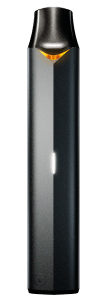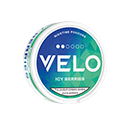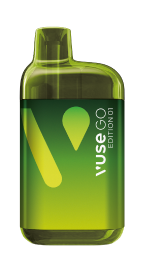
From the internet to family chat groups, everyone's got something to say about vaping. We're here to set the record straight. Below are some of the most common misconceptions and untruths that we've come across, but we know these aren't all. Got some that aren't on this list? Get in touch and we'll do what we can to bust those vaping myths.
MYTH: VAPING IS AS BAD FOR ME AS SMOKING CIGARETTES
Facts: Vaping offers an alternative to smoking for people who are unable or unwilling to quit using nicotine. Because vaping does not burn tobacco like cigarettes do, one’s exposure to toxicants is less. That said, vaping isn’t without risk, because it contains nicotine, which is still addictive. Find out more about vaping safety *This product is not risk-free and contains nicotine, an addictive substance.
Vuse's claims are based on a comparison of smoke from a scientific standard reference cigarette (which contains approximately 9 mg tar) and the emissions from a Vuse Pod. This comparison looked at the average levels of 9 harmful components, as identified by the World Health Organisation (WHO). WHO recommends reducing these 9 components in cigarette smoke to reduce harm.
MYTH: ALL VAPES CONTAIN INGREDIENTS ASSOCIATED WITH EVALI (E-CIGARETTE OR VAPING USE ASSOCIATED LUNG INJURY)
Facts: It is important that you check the ingredients in your vaping e-liquids THC and Vitamin E acetate are not, and have never been, added to our Vuse products. For more information about the ingredients we use in our products, click here.
Research findings and product sample testing show tetrahydrocannabinol (THC) vaping products, particularly from informal sources like friends, family, or in-person or online dealers, are linked to most EVALI cases and have played a major role in the outbreak.
Vitamin E acetate has been strongly linked to the EVALI outbreak. Evidence is not sufficient to rule out the contribution of other chemicals of concern, including chemicals in either THC or non-THC products, in some of the reported EVALI cases.
MYTH: VAPE PRODUCTS ARE NOT PROPERLY TESTED OR QUALITY CHECKED BEFORE BEING SOLD TO CONSUMERS
Facts: We can’t speak to the quality of other brands, but here at Vuse we apply stringent standards of quality testing to the development and manufacture of all our Vuse products around the world. The ingredients and components in the products we develop and manufacture are scrutinised by our team of toxicologists for their suitability for vaping.
MYTH: BATTERIES IN VAPING DEVICES ARE NOT SAFE
Facts: Most e-cigarette devices contain lithium-ion batteries like many other consumer electronics, including most modern smartphones. It is important that you check your vaping device meets all required battery safety standards.
Vuse products meet all international and national safety requirements, and they are designed with safety in mind. To avoid damaging your Vuse product only use the device with the equipment and charger provided in your kit. Your Vuse device will come with a leaflet that provides guidance on how to use and charge the device, including what environmental conditions you should use, charge and store it in.
MYTH: YOU CAN DRINK YOUR ELIQUID
Facts: No! Neither Vuse nor any other e-liquids are to be consumed or ingested in any way. In the event that you accidentally ingest the eLiquid, please consult a medical professional immediately.
Explore our other sections
*This product is not risk-free and contains nicotine, an addictive substance. Comparison of smoke from a scientific standard reference cigarette (approximately 9 mg tar) and emissions from Vuse Pod, Pod 2 and ePen, in terms of the average of the 9 harmful components the World Health Organisation recommends to reduce in cigarette smoke
**By 'no tar' we mean no tobacco derived tar. This product is not risk-free and contains nicotine, an addictive substance








































